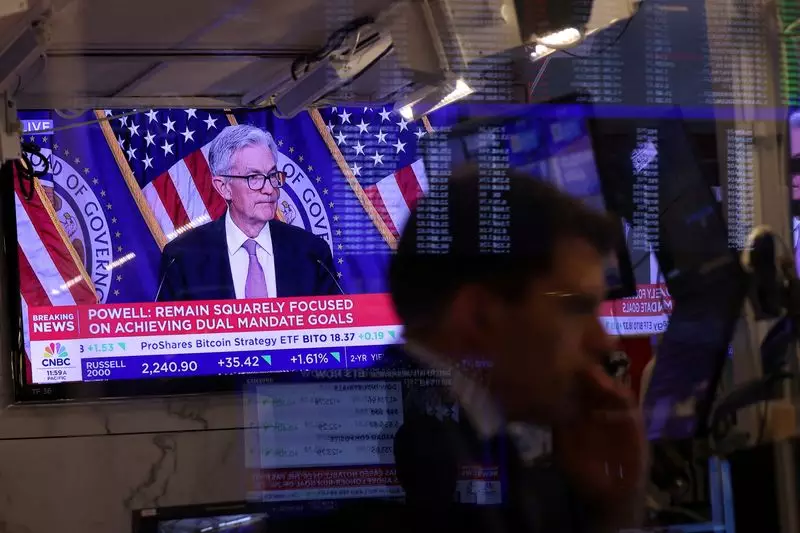The Federal Reserve’s recent decision to cut interest rates by 50 basis points has stirred various reactions in the financial market, but beyond the immediate headlines lies a more intricate narrative about the central bank’s evolving outlook on interest rates. Specifically, the modifications in policymakers’ expectations regarding the future of the federal funds rate are proving to be of paramount importance. The Federal Reserve’s stance suggests a shift toward a less aggressive approach in the near term while hinting at a higher neutral rate in the long-term projections. This article delves into the implications of these changes and discusses the underlying economic philosophies shaping the Fed’s current strategy.
The Federal Reserve has communicated that it will possibly emerge from its historically restrictive monetary policy sooner than anticipated. This evolution implies that the economy may have gained a measure of resilience that policymakers hold in greater regard than previous evaluations. While the Fed’s announcement may indicate some concern over labor market conditions or broader economic weaknesses, it simultaneously reflects a growing confidence in the economy’s upward trajectory.
Moreover, the indication of a higher eventual neutral rate underscores a cautious optimism. The Fed’s methods aim to implement what can be perceived as a shallower easing cycle, which appears to be a strategy forged in an environment of bolstered economic indicators. Analysts interpret this shift as aligned with the Fed’s ongoing ambition to guide the economy toward what is dubbed a “soft landing,” wherein growth is maintained without triggering recessionary pressures.
The immediate fallout from the Federal Reserve’s latest announcement was a dual reaction in the bond and equity markets. Prices of bonds moved upward, influencing yields to eventually rise, while equities exhibited a downward trend. This paradoxical movement encourages further scrutiny of investors’ original anticipations, which had analyzed and hoped for a more prolonged duration of lower interest rates.
Notably, as the Fed lowered its target funds to a range between 4.75% and 5.00%, policymakers simultaneously revised their longer-term projections for the fund rate. The new median projection stipulates a rise from 2.8% to 2.9%, marking the highest estimate since 2018. This shift is emblematic of the Fed’s recognition of an evolving economic landscape where restrictive policies may not need to be maintained for as long as previously believed.
Recognizing the Real Rate of Interest
The concept of the real rate of interest deserves examination in relation to the Fed’s recent activities. The estimates from within the Federal Reserve place the real rate approximating 1.15 percentage points above the natural rate, mirroring levels seen before past economic recessions. This suggests that the current monetary policy has remained restrictive, underscoring the journey toward economic stabilization.
Furthermore, traditional metrics such as R-Star—the theoretical interest rate that neither propels nor stalls economic activity when employment is at full capacity—are being set against the backdrop of these current adjustments. With R-Star hovering around 0.9%, the Federal Reserve’s current decisions mark its policies as approximately 200 basis points restrictive when set against the newly adjusted figures. Here, Chair Jerome Powell accentuates that upcoming policy decisions will remain data-driven, depending upon future economic indicators.
While the newly outlined roadmap from the Federal Reserve reflects a certain degree of clarity, ambiguity still looms regarding the broader implications of its monetary policy. The overall trajectory of interest rates will hinge upon various economic indicators, including inflation trends and employment figures.
What remains evident, however, is the Fed’s current positioning. By recognizing the economic resilience and adjusting forecasts, it appears the central bank aims to cautiously navigate the balance between stimulating growth and managing inflationary pressures. As the Federal Reserve conveys a commitment to flexibility and data responsiveness, stakeholders in the financial realm are tasked with deciphering and adapting to this dynamic policy landscape.
The Economic and financial repercussions from the Fed’s interest rate adjustments implicate various layers of investor sentiment and economic theory. Moving forward, the interplay of economic indicators and monetary decisions will capture the attention of market participants as they strive to gauge the paths of both growth and stability. The Fed’s latest actions are profoundly significant, setting the tone for the economic optimism and caution that lie ahead.

